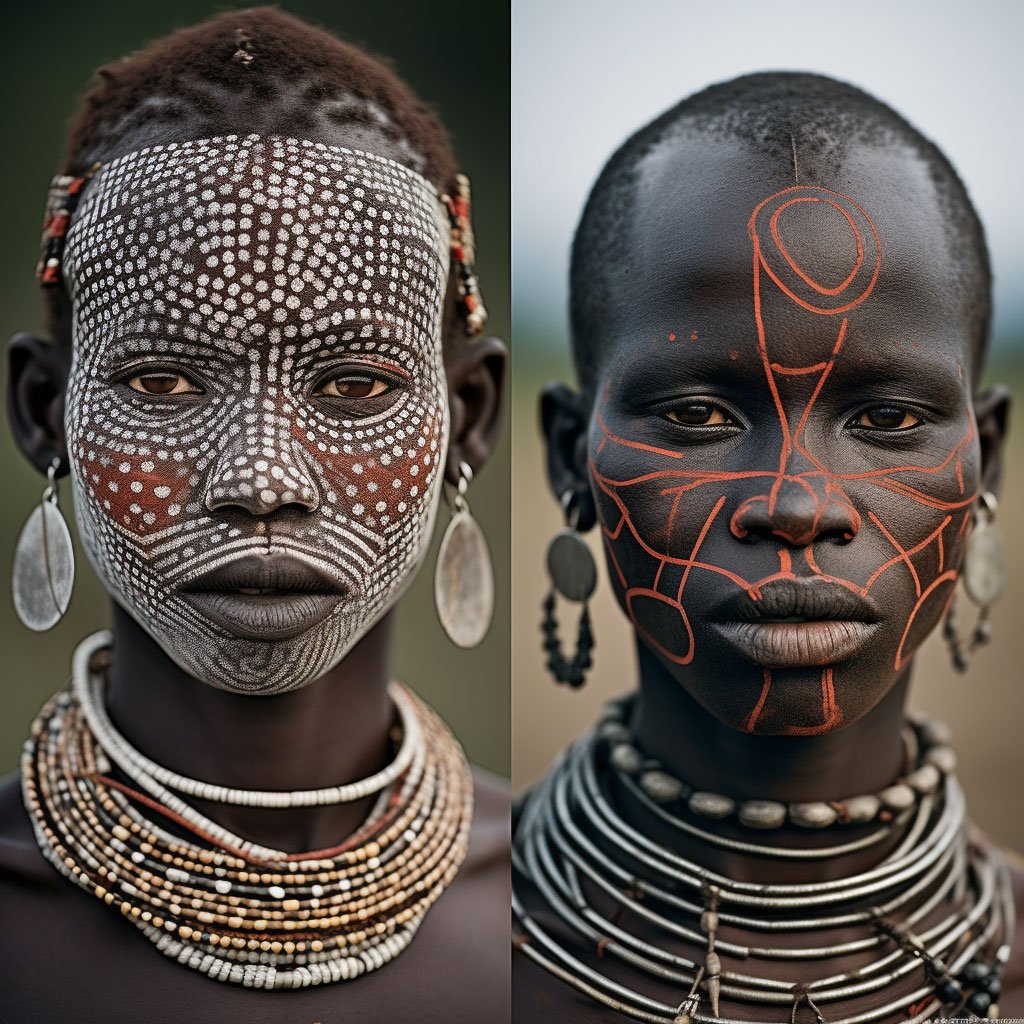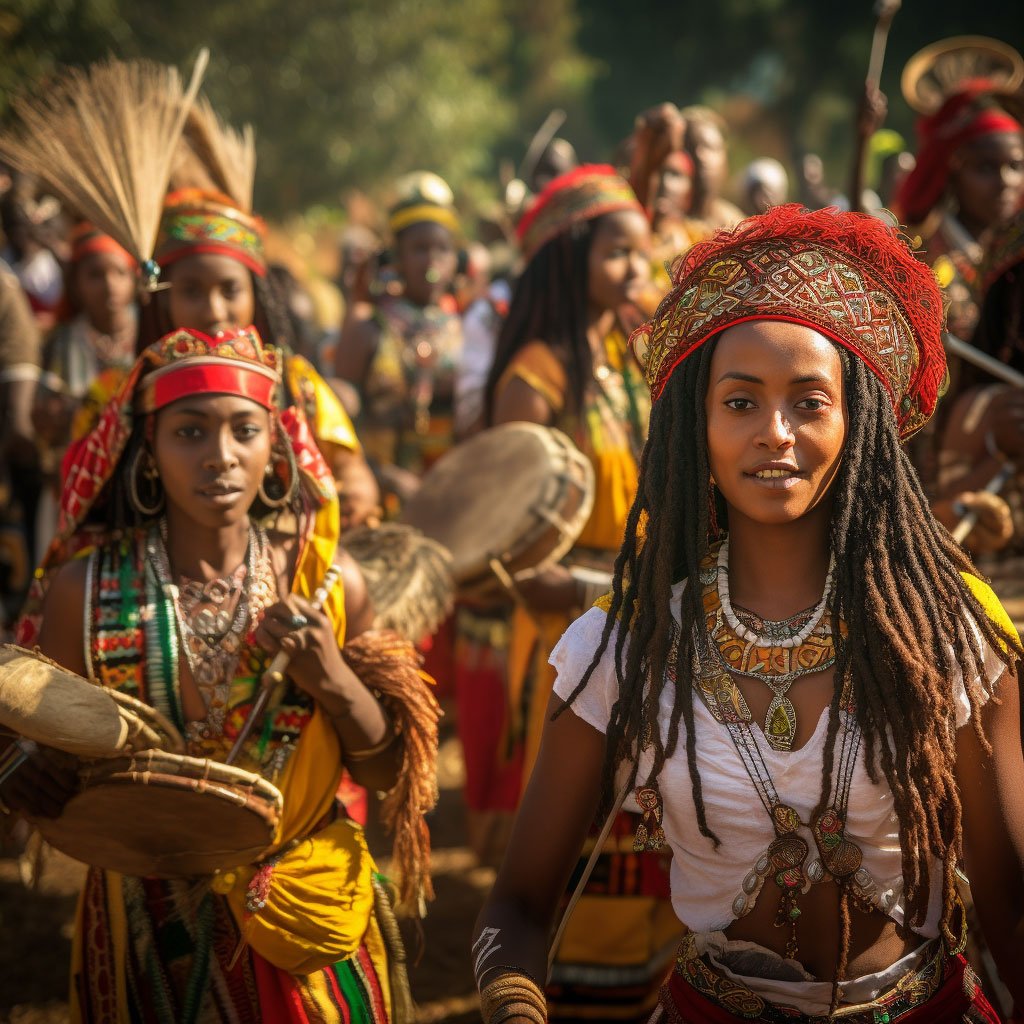Ethiopia, often referred to as the ‘Cradle of Humanity,’ is a country that boasts a rich and diverse cultural heritage. With over 80 ethnic groups, each with its unique customs, traditions, and languages, Ethiopia offers a cultural mosaic that is as fascinating as it is diverse. The country’s cultural richness is a reflection of its historical depth, with each tribe and ethnic group contributing to the vibrant tapestry of traditions that define Ethiopia. This article will take you on a journey through the vibrant cultures of Ethiopia, exploring the unique traditions of tribes like the Hamar and Mursi in the Omo Valley, and immersing in cultural ceremonies and festivals that mark the Ethiopian calendar.

The Omo Valley: A Cultural Melting Pot
Our cultural exploration begins in the southern part of the country, in the Omo Valley. This UNESCO World Heritage site is home to numerous ethnic groups, each preserving its unique way of life. The valley, with its fertile lands and the Omo River, has been a cultural crossroads for millennia, resulting in a rich tapestry of cultural practices and traditions. The Omo Valley is a living museum of human cultures, offering a unique opportunity to experience a variety of traditions and ways of life in close proximity. The tribes of the Omo Valley, despite their cultural differences, share a deep connection with the land and the river, which are integral to their livelihoods and cultural practices.
The Hamar Tribe: A Blend of Tradition and Resilience
Among the tribes that inhabit the Omo Valley, the Hamar tribe stands out for its unique customs and traditions. Known for their elaborate hairstyles and body adornment practices, the Hamar people have a distinct cultural identity. The women of the tribe, adorned with beaded necklaces and copper bracelets, are known for their striking beauty. The men, with their clay-covered hair and ochre body paint, exude a sense of strength and pride.

One of the most well-known customs of the Hamar tribe is the ‘bull-jumping’ ceremony, a rite of passage for young men. This tradition, which involves jumping over a line of bulls without falling, is a testament to the tribe’s emphasis on courage and resilience. The ceremony, which is accompanied by dancing, feasting, and ritualistic practices, is a major event in the community, drawing participants and spectators from near and far. The Hamar people’s ability to maintain their cultural practices amidst the pressures of modernity is a testament to their resilience and commitment to their cultural heritage. Their traditions, passed down through generations, are a vibrant expression of their cultural identity and a source of community cohesion and pride.
Surma Tribe: A Testament to Strength and Beauty
The Surma tribe, also known as the Suri, is a fascinating tribe in Ethiopia, renowned for their unique cultural practices. Living in the southwestern plains near the Sudanese border, the Surma lead a semi-nomadic lifestyle, moving with the seasons to find fertile grounds for their cattle.

The tribe is famous for their body art and modifications. Women often insert large clay plates into their lower lips, a sign of beauty and maturity. Men engage in a form of ritual stick fighting known as ‘Donga’ or ‘Saginé’, a way to prove their strength and attract potential brides. The Surma also practice scarification, creating intricate patterns on their bodies. Visiting the Surma tribe offers a unique opportunity to witness these traditions firsthand, enriching your understanding of Ethiopia’s diverse tribal cultures.
The Mursi Tribe: A Living Museum of Cultural Practices
Another tribe that calls the Omo Valley home is the Mursi tribe. The Mursi are perhaps best known for their lip-plate tradition, where women wear large clay plates in their lower lips. This tradition, which is unique to the Mursi, is a symbol of beauty and status within the tribe. The process of lip stretching, which starts in adolescence, is a significant rite of passage for Mursi women.

The Mursi, like the Hamar, have managed to preserve their traditional way of life despite the pressures of modernity. Their semi-nomadic lifestyle, centered around cattle herding and subsistence farming, is a testament to their deep connection with the land. The Mursi’s cultural practices, from their distinctive body adornments to their rituals and ceremonies, offer a fascinating insight into a way of life that has remained largely unchanged for centuries.
Dassanech Tribe: A Life Shaped by the Omo River
The Dassanech tribe, also known as the Daasanach, live in the southernmost region of Ethiopia’s Omo Valley. Their lives are intricately tied to the Omo River, which provides essential resources for their semi-nomadic lifestyle. The Dassanech move seasonally between riverbanks and higher grounds, adapting to the changing water levels.

The tribe is known for their resourcefulness and creativity. They create beautiful jewelry and adornments from whatever materials are available, including old watch straps, bottle caps, and shells. This ‘recycled’ fashion is not only practical but also a testament to their adaptability and resilience in a harsh environment. A visit to the Dassanech tribe offers a glimpse into a way of life that is both challenging and inspiring, deeply connected to the natural world.
Immersing in Cultural Festivals
Ethiopia is a country of festivals, with numerous cultural and religious celebrations marking the calendar. These festivals, which often involve music, dance, and feasting, are a vibrant expression of the country’s diverse cultures. One of the most significant festivals is Timkat, the Ethiopian Orthodox celebration of Epiphany. During this festival, the streets come alive with processions, music, and dance, offering an unforgettable cultural experience.

Timkat, which commemorates the baptism of Jesus in the Jordan River, is a three-day event filled with religious rituals, processions, and communal festivities. The festival is marked by the procession of the Tabot, a replica of the Ark of the Covenant, which is carried from the church to a nearby body of water. The water is then blessed and splashed on the participants, symbolizing the baptism of Christ. The festival, with its vibrant processions, traditional music, and communal feasting, offers a unique opportunity to experience the rich cultural and religious traditions of Ethiopia.
The Cultural Significance of Tribes and Festivals
The tribes of the Omo Valley, with their unique customs and traditions, and the vibrant festivals that mark the Ethiopian calendar, are more than just tourist attractions. They are a vibrant expression of Ethiopia’s cultural diversity and a testament to the country’s rich cultural heritage. These cultural practices, passed down through generations, are a source of community identity, cohesion, and continuity.

The cultural practices of the Hamar and Mursi tribes, from the bull-jumping ceremony to the lip-plate tradition, are not just rites of passage or symbols of beauty. They are integral parts of their cultural identity, reinforcing social bonds and ensuring the continuity of their cultural heritage. Similarly, festivals like Timkat are not just religious celebrations; they are communal events that reinforce social bonds and communal solidarity.
Conclusion: A Journey through Ethiopia’s Cultural Mosaic
Our journey through Ethiopia’s cultural mosaic, from the Hamar and Mursi tribes of the Omo Valley to the vibrant festivals that mark the Ethiopian calendar, has been an enlightening experience. The encounters with different cultures, each with its unique customs and traditions, have left us with a deep appreciation for the country’s rich cultural heritage.

Ethiopia, with its diverse cultures and traditions, truly is a paradise for cultural enthusiasts. The opportunity to immerse oneself in these vibrant cultures, to witness age-old traditions and participate in communal festivities, is a unique experience that offers a deeper understanding of the country’s cultural richness.
This journey has been a testament to the beauty and richness of human cultures, and a reminder of the importance of preserving these precious cultural practices for future generations. As we leave the vibrant cultures of Ethiopia, we carry with us not just memories, but a deeper appreciation for the cultural diversity that makes our world a fascinating place.
